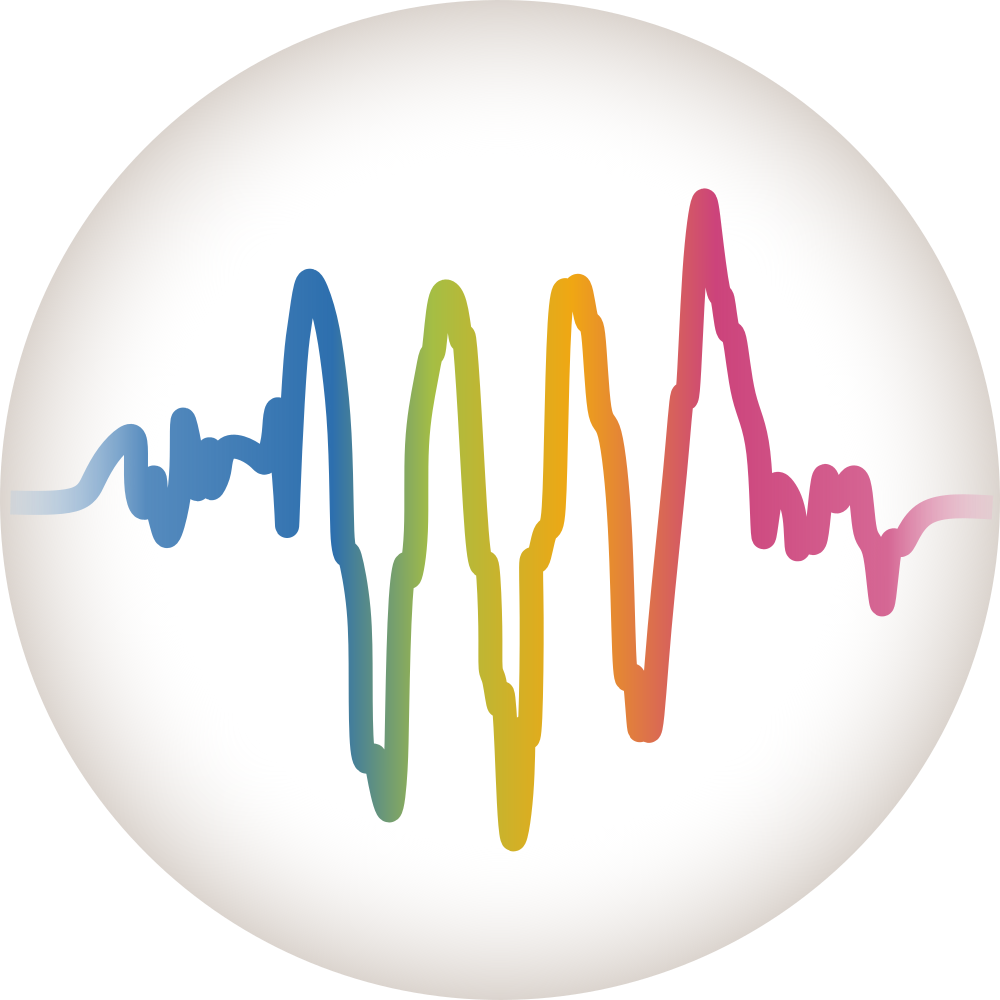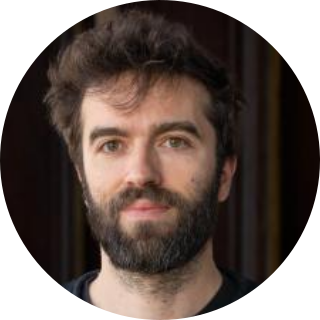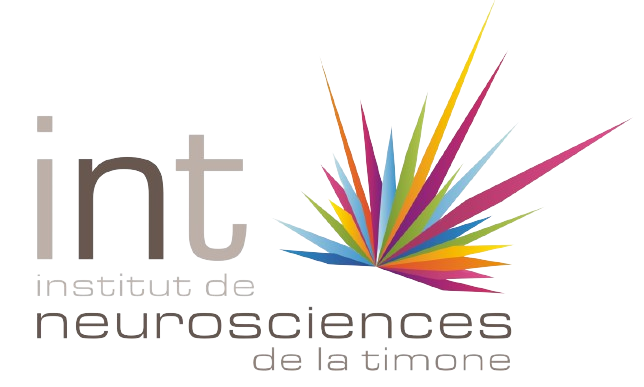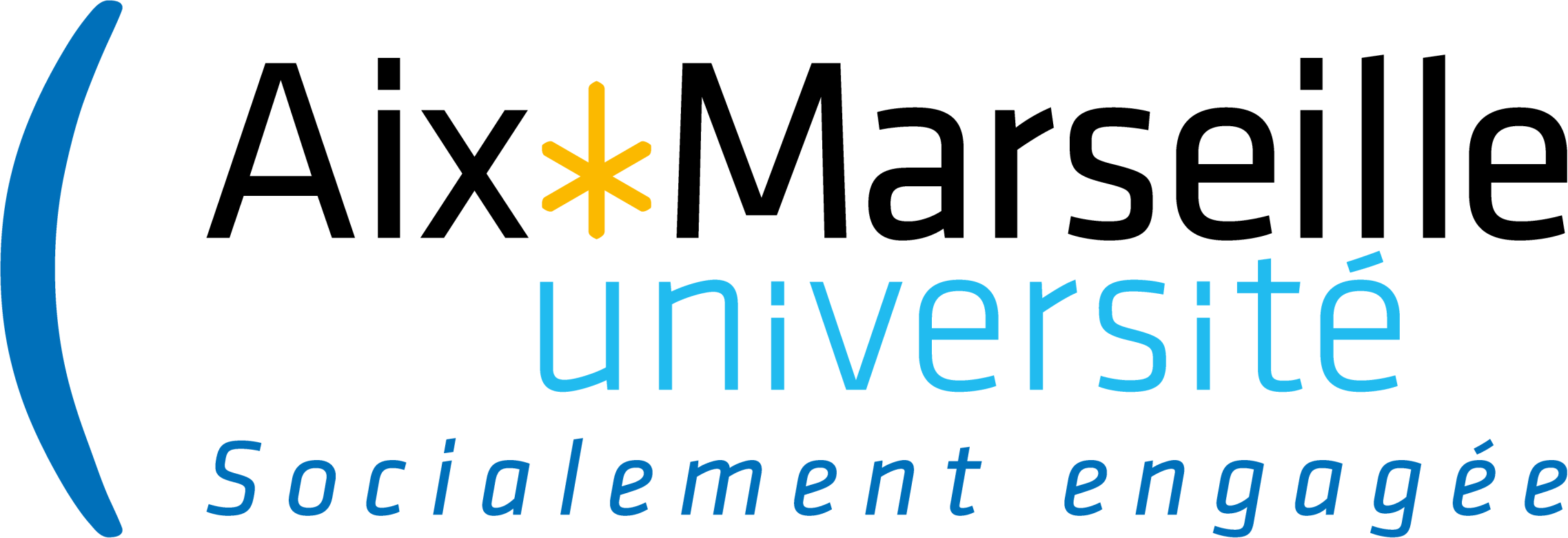Program
This Workshop is aimed at exploring transient activity dynamics and connectivity at multiple scales across different central nervous system (CNS) structures, covering different experimental methodologies combined with theoretical approaches. The Workshop will gather an excellent international panel of renowned speakers working on CNS transients. Combining experimental and computational talks within each session, followed by round-table discussions will foster a dynamic exchange of ideas regarding common generating mechanisms and functional roles of transients. It will promote novel interactions within and beyond the NeuroMarseille community.
14th March - Cortical Transients
| 08:45 - 09:00 | Welcome | |
|---|---|---|
| 09:00 - 09:15 | Introduction | |
| I - Sensory transients Chaired by Laurent Perrinet |
09:15 - 10:00 | Mathilde Bonnefond: (Nested) transients in the visual system: we observe them... do we need them? |
| 10:00 - 10:45 | Martin Vinck: Transients vs. oscillations in predictive processing | |
| 10:45 - 11:15 | Break | |
| 11:15 - 12:00 | Giulio Bondanelli: Circuit mechanisms of transient population responses in the auditory cortex | |
| 12:00 - 12:30 | Student chat with the speakers | |
| 12:30 - 14:00 | Lunch | |
| II: Motor transients Chaired by Bjørg Kilavik & Etienne Combrisson |
14:00 - 14:45 | Yifat Prut: Subcortical shaping of motor cortical activity and motor behavior in non-human primates |
| 14:45 - 15:30 | James Bonaiuto: Beta bursts: does diversity in waveform = diversity in function? | |
| 15:30 - 16:00 | Break | |
| 16:00 - 16:45 | Andrew Quinn: A different perspective on oscillations with Empirical Mode Decomposition | |
| Round table Chaired by Frederic Chavane & Matthieu Gilson |
16:45 - 17:30 | Common mechanisms of sensory and motor transients? |
| 17:30 - 18:00 | Student chat with the speakers |
15th March - Sub-cortical and CNS input/output Transients
| III - Basal ganglia transients Chaired by Simon Nougaret |
09:30 - 10:15 | Genela Morris: Basal ganglia neuromodulators: Transient signals for long lasting effects? |
|---|---|---|
| 10:15 - 10:45 | Break | |
| 10:45 - 11:30 | Robert Schmidt: Transient oscillations in the basal ganglia and cortex: analysis, computational modelling, and function | |
| 11:30 - 12:00 | Student chat with the speakers | |
| 12:00 - 13:30 | Lunch | |
| IV - Spinal cord & retina transients Chaired by Rémi Bos |
13:30 - 14:15 | Evelyne Sernagor: A potential angiogenic role for early spontaneous activity in the immature central nervous system |
| 14:15 - 15:00 | Muriel Thoby-Brisson: Breathing rhythmogenesis: Generating mechanisms and functional role of transients | |
| 15:00 - 15:30 | Break | |
| 15:30 - 16:15 | Jessica Ausborn: Unraveling the Complexity of Brainstem-Spinal Locomotor Control | |
| Round table Chaired by Sophie Denève & Rémi Bos |
16:15 - 17:00 | Common experimental and computational mechanisms for transients across the CNS? |
| 17:00 - 17:30 | Student chat with the speakers | |
| 17:00 - 20:00 | Wine & Cheese for all participants (4th floor INT) |
Speakers

Mathilde Bonnefond
My research aims at understanding the role of neuronal oscillations (brain rhythms) and more complex dynamics in implementing local computations and in setting up the communication in brain networks during sensory perception independently of the modality.
In various sensory modalities, in health and disease, we mainly study human perception in the aim of unravelling its underlying cognitive, computational and neurophysiological mechanisms.
Title: (Nested) transients in the visual system: we observe them... do we need them?
Abstract: Brain rhythms have frequently been described as sustained phenomena. Yet, upon detailed examination, it becomes apparent that these rhythms typically manifest as transient events, with various frequencies nested within one another. In my presentation, I will present data collected over the years that illustrate this complex structure for gamma, beta, and alpha frequencies.
The discussion will finish with theoretical perspectives on why these brain activities might be transient, rather than sustained, to enable the brain to process intricate visual information, such as visual scenes.

Martin Vinck
Research in my laboratory is divided into three research lines: Circuits-Ensembles-Learning:
- Circuits: We investigate how distinct classes of excitatory and inhibitory neurons regulate plasticity and contribute to flexible information processing.
- Ensembles: We investigate how ensembles of neurons encode information through spatio- temporal patterns and what the role of spike sequences and bursting are in information encoding and transmission. Furthermore we investigate what the relationship between spontaneous (imagination, dreams) and sensory evoked activity is.
- Learning: We investigate how the brain performs self-supervised learning using predictions of the unknown (in space and time), utilizes parallel features for object
Title: Transients vs. oscillations in predictive processing
Abstract: We will discuss the different roles of transients and oscillations in predictive processing. We will show evidence that oscillatory signals occur during relative stationary periods esp. for low-dimensional and predictable inputs. We argue that these modes are not conducive for communication between areas. On the other hand we discuss that broadcasting of information primarily takes place during aperiodic transients, in which information is encoded in sequences of activity, and STDP mechanisms lead to transient anticipatory firing at the start of sequences.

Giulio Bondanelli
I am interested in how complex computations arise in networks of recurrent neurons. I am currently working as a postdoc at IIT Genova with Stefano Panzeri, trying to understand how functional and anatomical connectivity shapes dynamics and computations in association areas using circuit models. I previously obtained my PhD under the supervision of Srdjan Ostojic at ENS Paris, where I developed models of transient coding in recurrent networks, and tested them on auditory cortical data.
Title: Circuit mechanisms of transient population responses in the auditory cortex
Abstract: Across sensory systems, transient patterns of neural activity arise following the onset (ON) and offset (OFF) of stimuli. While ON responses have been widely studied, the mechanisms generating OFF responses in cortical areas have not been fully elucidated. We examine the hypothesis that transient OFF responses are generated through recurrent network interactions. To test this hypothesis, we performed population analyses of two-photon calcium recordings in the auditory cortex of awake mice listening to auditory stimuli. We find that network models can generate strongly transient population activity at stimulus offset, and account for the low-dimensional organization of population responses and their global structure across stimuli.

Yifat Prut
Our lab is interested in the interplay between local motor cortical computation and long-range descending and ascending connectivity. Specifically, we investigate (1) how descending motor cortical activity is translated into action by the spinal cord; (2) how long-range ascending inputs from subcortical structures gain a powerful impact on motor timing and coordination; and (3) the degree of universality of the control policy used by the system for controlling different effectors, such as face vs. hand.
Our long-term goal is to identify how the microscopic structures of motor cortical circuitry dictate and shape macroscopic patterns of motor cortical activity and hence movement.
Title: Subcortical shaping of motor cortical activity and motor behavior in non-human primates
Abstract: The onset of voluntary movements is driven by properly timed and coordinated firing transients across a large population of motor cortical neurons. The cerebellum is considered to play an important role in tuning this activation pattern, as is demonstrated by the motor impairments typically found in cerebellar patients. However, the neural mechanisms through which the cerebellum controls motor cortical activity are not fully understood.
To address this question trained monkeys to perform a center-out motor task. Stimulating electrode was chronically implanted in the superior cerebellar peduncle (SCP) an recordings were made in the sensorimotor cortex, the motor thalamus and forearm muscles. Ionophoresis of specific AMPA receptor antagonists (NASPM) was used to further dissect the cortical circuitry that integrates cerebellar signals.
Motor cortical neurons that integrated cerebellar signals exhibited synchronous transient firing at movement onset, which were strongly correlated with reaction time. We found that high-frequency stimulation (HFS) via the SCP electrode effectively and reversibly blocked transmission through the cerebella-thalamocortical (CTC) pathway. This manipulation replicated the impaired motor timing and coordination characteristics of cerebellar ataxia, and resulted in a loss of response transients at movement onset and a decoupling of task-related activity. We also found that cerebellar shaping of motor cortical activity was obtained via thalamocortical synchrony. Finally, using pharmacological tools we found that thalamic input to the motor cortex triggered feedforward inhibition. The functional consequences of this connectivity pattern were such that the task-related activity of cortical interneurons preceded that of pyramidal cells.
These results suggest that the cerebellar inputs trigger transient and coordinated firing of both inhibitory and excitatory cells, thus assigning a prominent and causal role to the CTC system in shaping cortical activity at movement onset.

James Bonaiuto
The Decision, Action, and Neural Computation lab studies how the brain produces actions: how it decides what actions to perform, how it prepares to perform an action once this decision has been made, and how it updates its internal representations based on the outcome of the action.
We have several ongoing projects including 1) investigation of the mechanisms, functional roles, and development of bursts of beta activity in motor cortex, 2) development of high precision MEG techniques for laminar analyses, 3) noninvasive brain-machine interfaces for motor rehabilitation, and 4) signatures of long-term sensorimotor learning in neural population activity.
Title: Beta bursts: does diversity in waveform = diversity in function?
Abstract: Neural activity in several frequency bands, most notably beta, has recently been more widely acknowledged to occur as transient burst events. Beta band power has been implicated in a wide range of cognitive processes, which makes it difficult to determine its precise computational functional role. Many studies that do take into account the transient nature of beta activity tend to detect only high amplitude bursts, and treat them as homogeneous events. I will present a new method for burst detection that does not rely on fixed power thresholds, and an analysis that separates bursts based on their waveform shape. I will then present the results from several studies showing that bursts with different waveform shapes exhibit a range of rate dynamics prior to and during movement, suggesting that they may play different functional roles in sensorimotor processes. Finally, I will show how these waveform-specific rate dynamics can be leveraged to achieve accuracy levels equivalent to, or exceeding, the state of the art in noninvasive decoding of imagined movement. Taken together, these results suggest that burst waveforms might provide a window onto cortical circuit activity, and that the wide range of functional roles ascribed to beta power may be due to a consequence of the overzealous application of the Fourier transform and the natural time scale of cortical dynamics.

Andrew Quinn
My research involves developing analysis approaches to characterise oscillatory patterns in electrophysiological data. Such oscillations have a rich and rapidly changing structure which is tightly linked to synchronisation and co-ordination in underlying neuronal populations. I am interested in exploring how features such as connectivity and waveform shape reflect behaviour and processing, whilst overcoming some limitations of our standard analysis approaches in this area. Towards this aim, I use the Empirical Mode Decomposition, Hidden Markov Models and Multivariate Autoregression to explore Magnetoencephalography data.
Title: A different perspective on oscillations with Empirical Mode Decomposition
Abstract: Neuronal oscillations can be split into separate components using the data-drive sifting algorithm to perform an Empirical Mode Decomposition (EMD). The resulting modes contain mono-component oscillations that retain much of the non-linear and dynamic properties of the original signal. We can then represent the spectral content of these modes using instantaneous frequency as an alternative to the Fourier transform. This alternative framework avoids some of the common pitfalls of Fourier analyses, such as time-frequency trade-off, and provides a window onto challenging features such as rapid dynamics and waveform shape. Like all analyses the EMD algorithms are not perfect, but I argue that they provide a powerful complement to traditional approaches that is better optimised for approaching non-linear and non-stationary signals.

Genela Morris
Genela Morris is a Principal Investigator at the University of Haifa. She investigated the functions of several basal ganglia nuclei in decision making and reinforcement learning focusing on the role of midbrain dopamine neurons and striatal cholinergic interneurons in these processes. Another aspect of her research aims at understanding the encoding of time and distance by hippocampal cells in relation with experience within an environment.
Title: Basal ganglia neuromodulators: Transient signals for long lasting effects?
Abstract: Humans and animals are confronted with complex inputs from their environment, which demand a single response. Typically, chosen responses are those that yield favorable outcomes or reinforcement. This form of control involves action-selection through cortico-basal ganglia-cortical circuit. The basal ganglia are the also the main brain target for neuromodulation, predominantly by dopamine and acetylcholine. These neuromodulatory inputs origins are very different: while dopamine is released from projections of the midbrain structures of the VTA and SNc, acetylcholine is produced locally by striatal cholinergic interneurons. Both inputs have a tonically active mode, interrupted by transient signals in response to behaviorally relevant events. Curiously, although the cell bodies of dopamine neurons and of cholinergic interneurons are very distant, these transient signals coincide temporally and their outputs are spatially co-localized. Physiologically, these dopaminergic and cholinergic inputs have complex reciprocal interactions but the immediate and long-term cognitive effect of this interaction is unclear. In this talk I will present results from non-human primate and rodent recordings of dopamine and acetylcholine neurons and the effects of their activity on neural representation in the striatum and the hippocampus. With this, I will propose a framework for the distinct roles of the dopamine and acetylcholine transient signals for the learning of value and of attention.

Robert Schmidt
Title: Transient oscillations in the basal ganglia and cortex: analysis, computational modelling, and function
Abstract: Neural oscillations are a key feature of brain activity and have been studied extensively in the context of cognitive functions and sensorimotor processing. However, recent studies have highlighted that oscillations in the brain are often transient in nature, consisting only of a few oscillation cycles, rather than being sustained throughout performing a cognitive task. Such transient oscillations have been observed in a variety of oscillation frequencies, including the theta, beta, and gamma bands, as well as in different cortical and subcortical brain regions for a range of cognitive tasks and species. In this talk I will discuss several projects involving the analysis, computational modelling, and functional roles of transient neural oscillations in local field potentials or EEG recordings in basal ganglia and cortical regions. First, I will consider transient beta oscillations in the rodent basal ganglia and how computational models can account for their partially stochastic nature. Next, I will compare this to EEG beta oscillations in humans performing a stop-signal task, where beta oscillations seemed to functionally increase response thresholds. Finally, I will present some recent findings on the analysis of theta oscillations in humans indicating a functional role in error processing.

Evelyne Sernagor
Evelyne Sernagor, PhD is a professor in Retinal Neuroscience (Biosciences Institute) at Newcastle University. Her lab is interested in retinal plasticity in health and disease.
She investigates how early neural activity drives the maturation of functional properties in retinal ganglion cells. Both spontaneously generated perinatal activity (taking the form of waves propagating across the retina) and early visual experience play crucial roles in retinal maturation.
She also investigates retinal function in the adult mouse, more particularly trying to understand the function diversity of retinal ganglion cells.
She has a long-standing collaboration with Majlinda Lako and Lyle Armstrong, investigating the use of stem cells and stem cell-derived retinal organoids for photoreceptor repair in outer retinal dystrophies.
She uses pharmacogenetics and various in vitro techniques, including calcium imaging, patch clamp recordings, large-scale high-density multielectrode array recordings and immunocytochemistry,
Title: A potential angiogenic role for early spontaneous activity in the immature central nervous system
Abstract: Intense spontaneous neural bursting activity is omnipresent in the developing central nervous system. It is well established that it occurs during short “critical” periods of synaptogenesis, enabling Hebbian wiring of network connectivity. At the same time, by continuously producing strong bursting episodes, developing neurones are extremely energy-demanding. Resting ionic levels are restored via metabolic pumps that receive the necessary energy from oxygen supplied by blood vessels. Not surprisingly, angiogenesis occurs precisely while immature neurons are spontaneously active, suggesting that early neural activity per se may guide blood vessels development. However, remarkably little is known about this potentially important role for early neural activity. We investigate these questions in the neonatal mouse retina, where blood vessels initially grow in a superficial plane, while waves of spontaneous activity sweep across the retinal ganglion cell layer (GCL), just underneath the growing vasculature. We discovered transient clusters of auto-fluorescent cellular complexes in the GCL, forming an annulus around the optic disc, gradually expanding to the periphery. Remarkably, they appear locked to the frontline of the growing vasculature, reaching the periphery by P7-8, after which they completely disappear. Large-scale pan-retinal multielectrode array recordings and calcium imaging of the waves reveal that their initiation points are localized just outside the outer edge of the growing superficial vascular plexus and follow a developmental center-to-periphery pattern similar to the clusters and blood vessels. Blocking Pannexin1 (PANX1) hemichannels activity with probenecid significantly decreases wave frequency. Single-cell RNA sequencing derived from auto-fluorescent clusters reveals that they express genes related to microglia, neurones, endothelial cells and apoptosis. Moreover, they specifically co-localise with Heme oxygenase (HO)-1 expressing microglia that form a large annulus around the growing superficial vascular plexus. The autofluorescent clusters are preferentially found at the outer edge of the HO-1 microglia population. Closer inspection reveals that the autofluorescence signal resides in vacuoles within HO-1 microglia, indicating metabolic stress and ensuing phagocytosis.
These observations suggest that during early stages of spontaneous activity in the neonatal retina, transient hyperactive cells in the GCL are responsible for generating retinal waves in activity hotspots that reside outside the growing vasculature. These hotspots of intense neural activity attract new blood vessels to increase local oxygen supply. These hyperactive cells express PANX-1 hemichannels that release ATP (or other purinergic agonists) upon depolarization, attracting HO-1 microglia that establish contact with these cells, eventually eliminating them once blood vessels have reached their vicinity. We propose that this mechanism may be universal in the developing CNS, where blood vessels are known to invade neural territories once neurones become electrically active.

Muriel Thoby-Brisson
Muriel Thoby-Birsson, PhD/HDR is a CNRS team leader at the Institut de Neurosciences Cognitives et Intégratives d'Aquitaine.
Her research aims to decipher the neurobiological bases of the development and functional plasticity of motor control neural networks at the cellular, network and integrated system levels during normal operation and pathological dysfunction (spinal cord injury, exposure to nanoparticles, central congenital hypoventilation syndrome). Her main focus is on locomotor, vestibular, gaze control and respiratory functions during early stages of development (embryonic, newborn and juvenile animals). For this, she uses rodent (mouse, rat) and amphibian (xenopus) animal models that are amenable to in vitro and in vivo investigation, with the possible development of new specific transgenic lines, some of which will serve both fundamental and translational research purposes. She uses multi-faceted approaches ranging from neural activity measurements (unitary and multi-cellular electrophysiology, nerve recordings, functional imaging, pharmacology treatments) and anatomical investigations (immunohistology, Clarity), to behavioral analyses (plethysmography, electromyography, kinematics, optogenetic) performed on our AniMotion plateform.
Until now, her research has made important contributions to unraveling neural processes involved in (1), the development of brainstem motor networks responsible for respiration, and (2), the functional coupling between different motor-to-motor, motor-to-sensory and sensory-to-motor circuits required for coordinating effective behavior. (3) She also developed several pathophysiological projects contributing to the fundamental description of neural network abnormal development with the added potential of supporting pre-clinical investigations.
Title: Breathing rhythmogenesis: Generating mechanisms and functional role of transients
Abstract: Neural networks controlling complex motor outputs can generate several rhythmic neuronal activities, often with different time scales. One example of such a network is the preBötzinger complex network (preBötC) that generates and controls the respiratory rhythm characterized by distinct respiration-related patterns. For instance, this network can simultaneously generate fast, small amplitude, mono-phasic eupneic breaths together with slow, high-amplitude, bi-phasic augmented breaths (sighs). We, and others, have started deciphering the underlying rhythmogenic mechanisms for this bimodal discharge pattern. I will present findings that explain how transients are involved in sculpturing these different respiratory patterns, using a combination of computational modeling and experimental data obtained in vitro.

Jessica Ausborn
Jessica Ausborn, PhD, is an assistant professor in the Department of Neurobiology & Anatomy at Drexel University College of Medicine. She studies the neurophysiological mechanisms of how neural networks process and encode activity to generate appropriate behaviors. To this end, she develops detailed, cutting-edge models of invertebrate as well as vertebrate neurons and neuronal networks. By integrating a multitude of experimental findings, and often in close interaction with experimental collaborators, her work aims to discover mechanisms involved in sensorimotor integration, neural processing, rhythm generation, and the selection and generation of diverse and flexible behaviors.
Major research areas include:
- Neural algorithms underlying diversity in visual feature integration
- Control strategies of descending command systems for the generation of context-specific locomotor behaviors
Title: Unraveling the Complexity of Brainstem-Spinal Locomotor Control
Abstract: All animals must adapt their locomotion for various tasks such as changing speeds, gaits, and directions. This adaptation relies on the dynamic activity of neural circuits in the spinal cord and brainstem.
Experimental studies, aided by targeted genetic approaches, have revealed specific neuronal populations within the spinal cord and brainstem that play key roles in generating and controlling locomotor dynamics such as gait and speed transitions or changing the direction of movement.
However, the complexity of these circuits poses a challenge for experimental methods alone. To gain deeper insights, we use computational modeling to explore how these neuronal populations interact and coordinate locomotor behaviors. By integrating data from multiple sources, our models provide valuable insights into the organization and function of these circuits, shedding light on the mechanisms underlying brainstem-spinal locomotor control.
Organizers
Venue
Institut de Neurosciences de la Timone
Faculté de Médecine, 27 Bd Jean Moulin, 13005 Marseille
Access
By metro: M1 blue line, stop at "La Timone"
By bus: 12, 12B, 12S, 40, 52, 54, 72, 91
Download bus and metro network map
Location
Salle Henri Gastaut, ground floor INT building
bjorg.kilavik[at]univ-amu.fr











